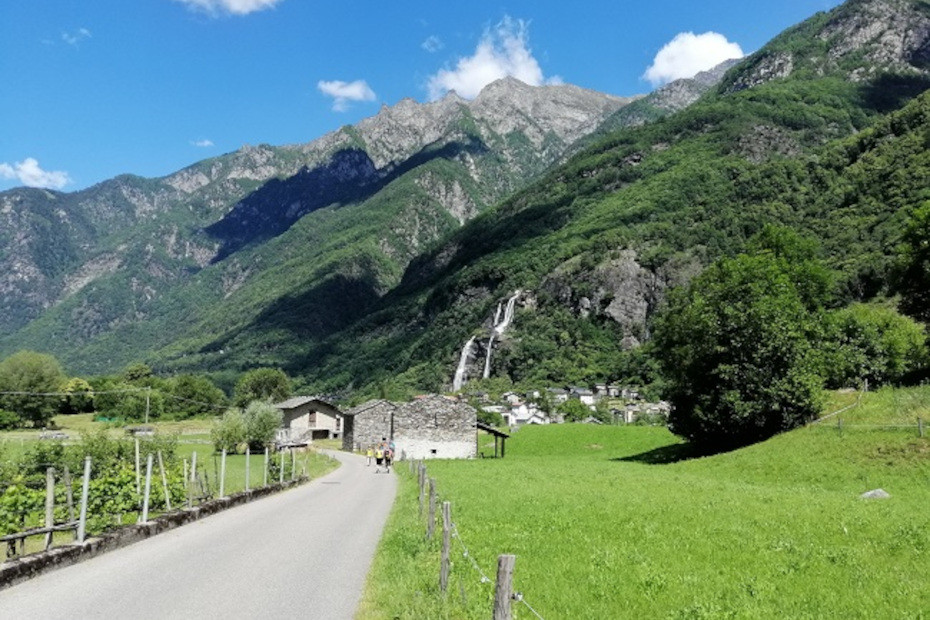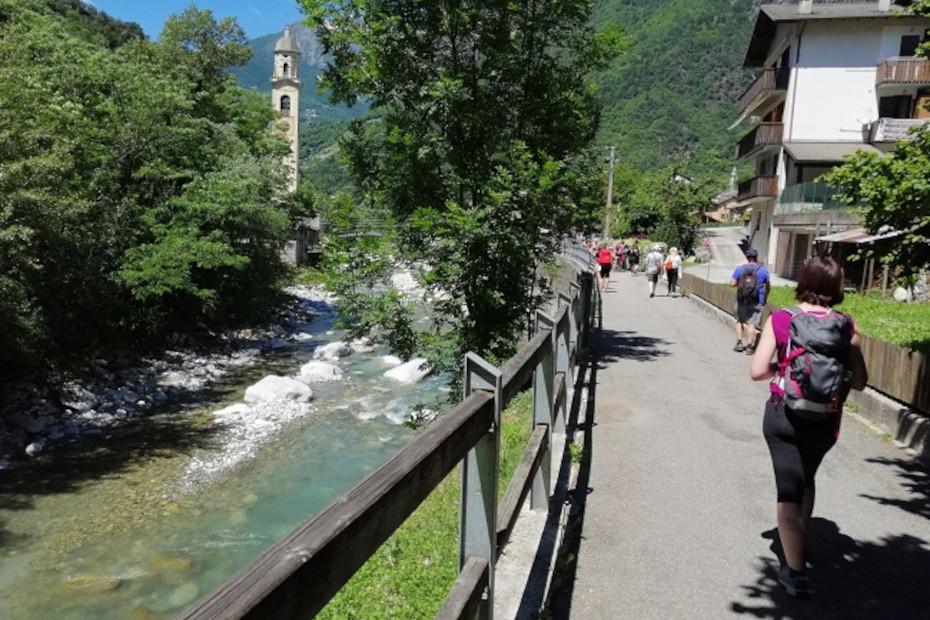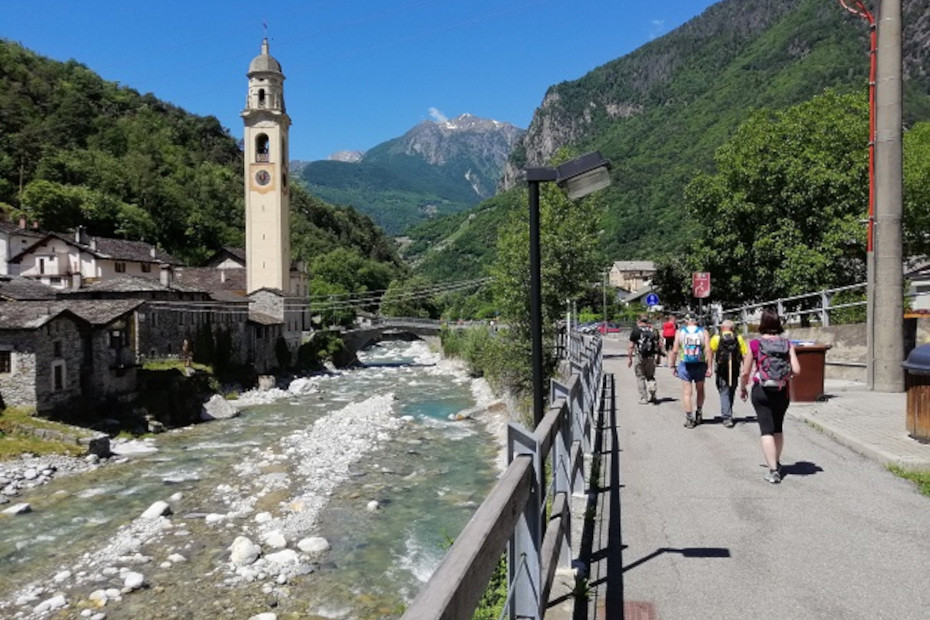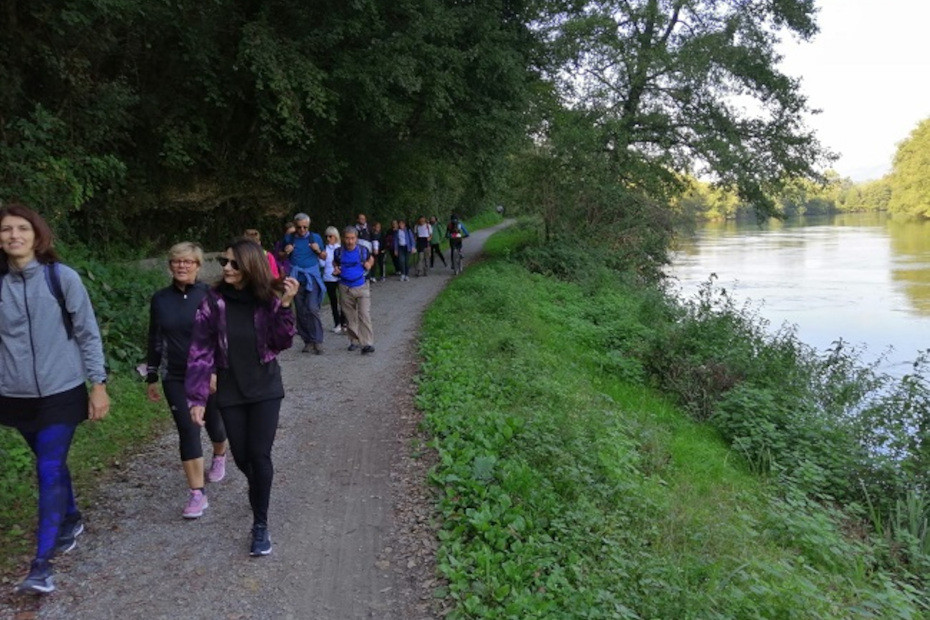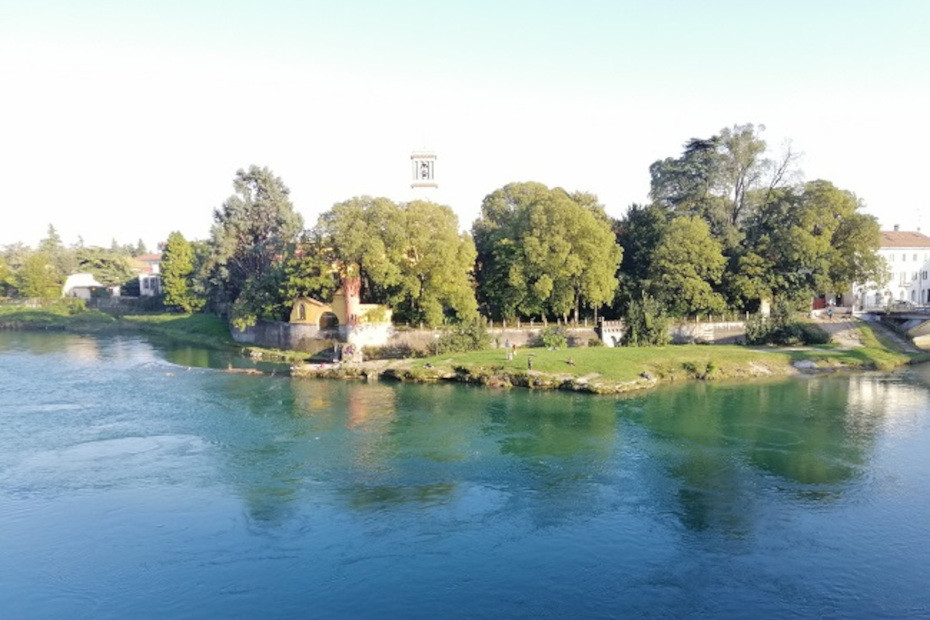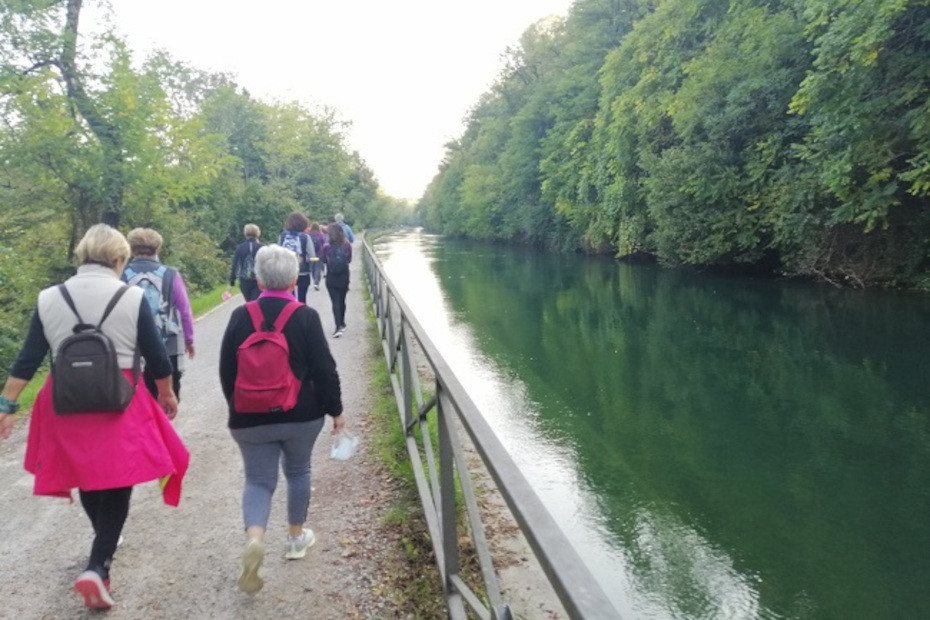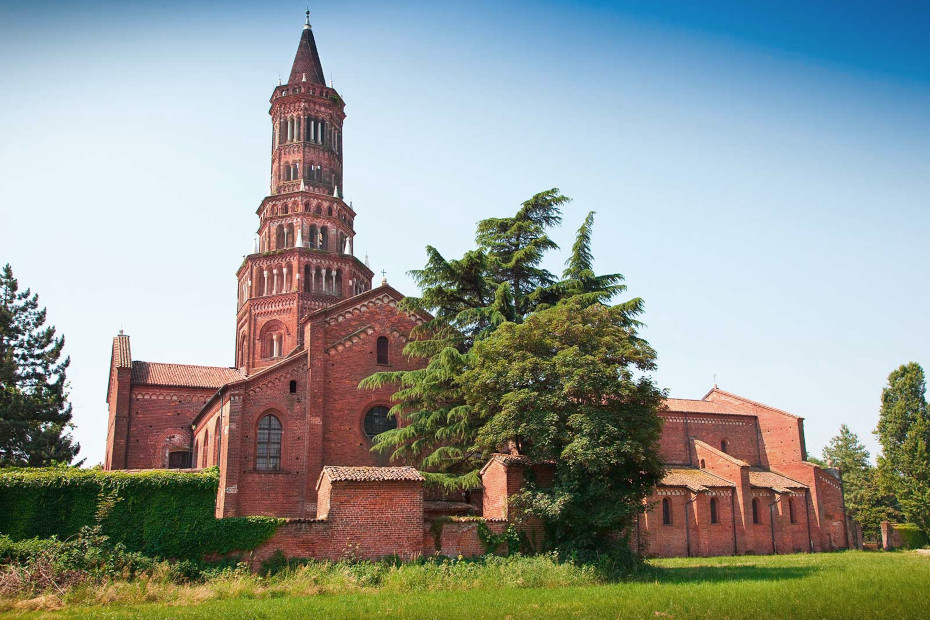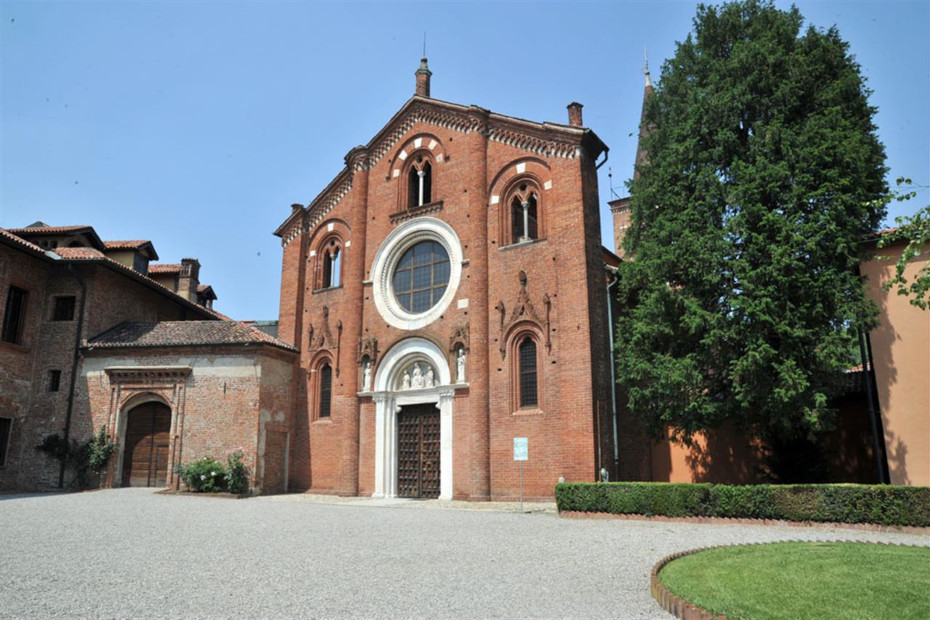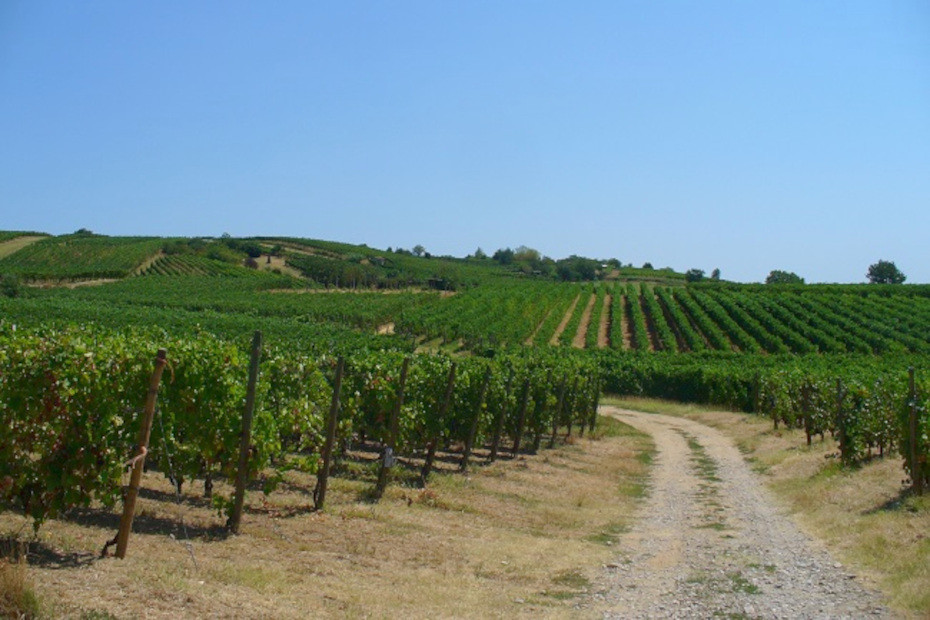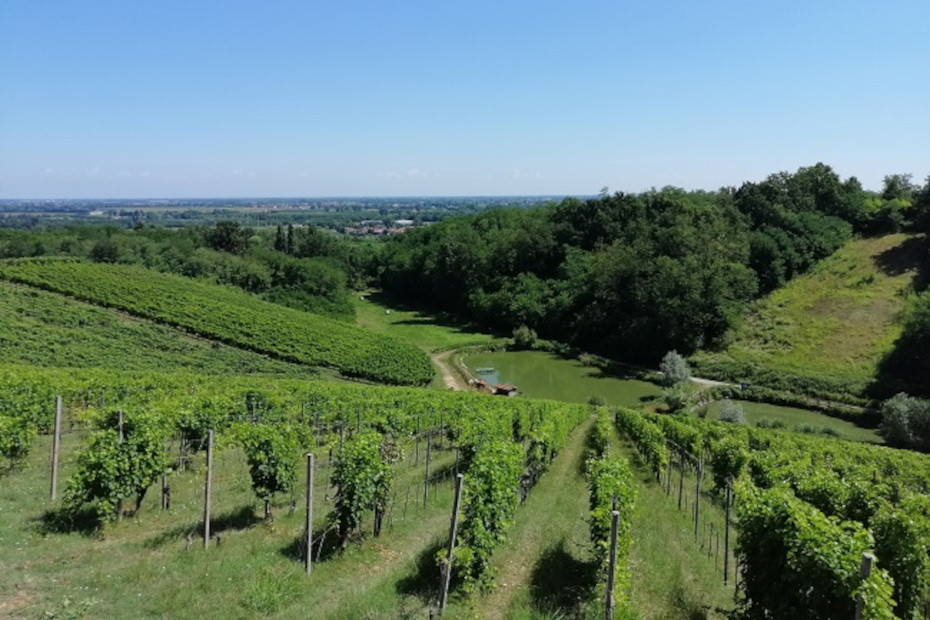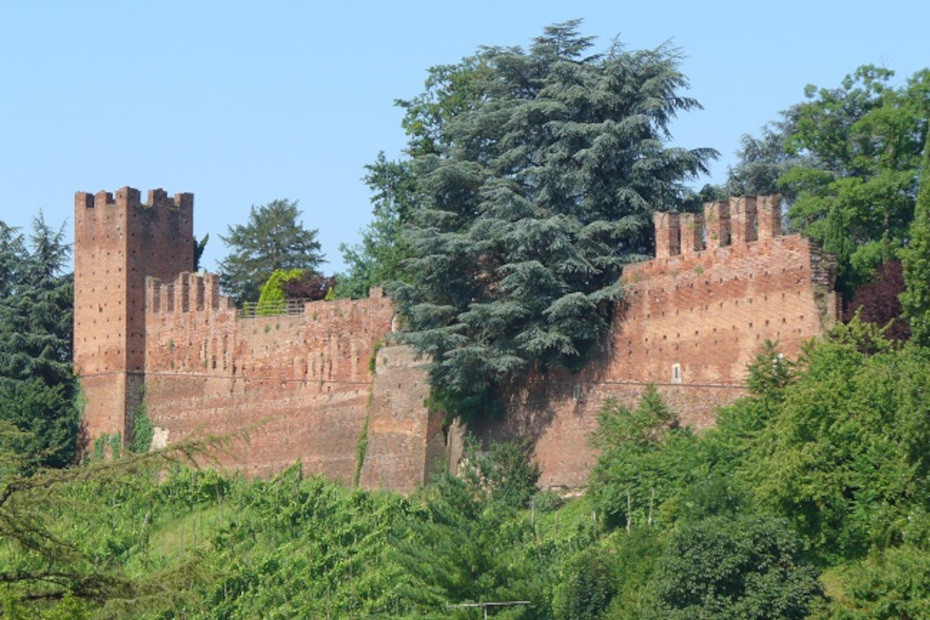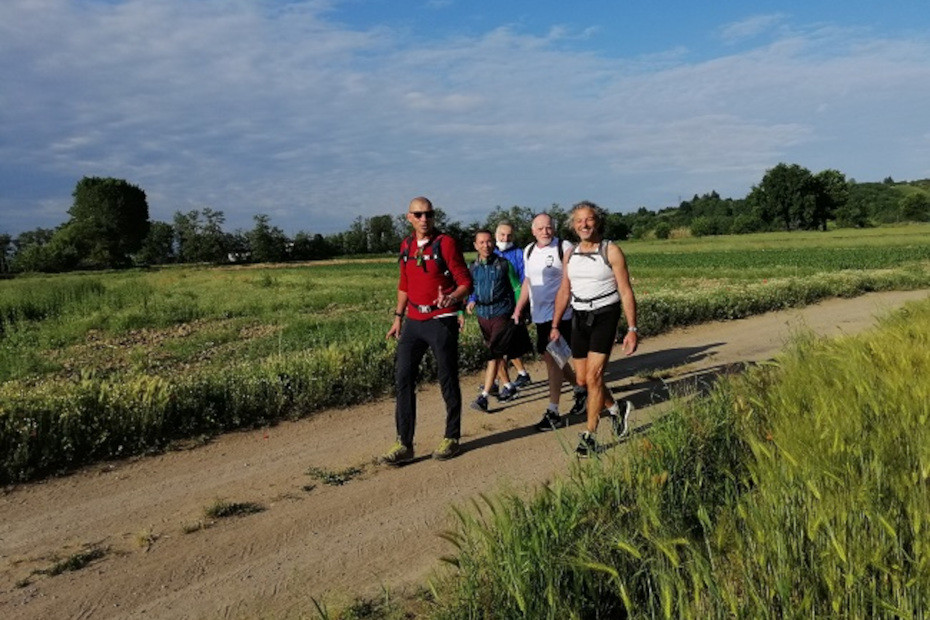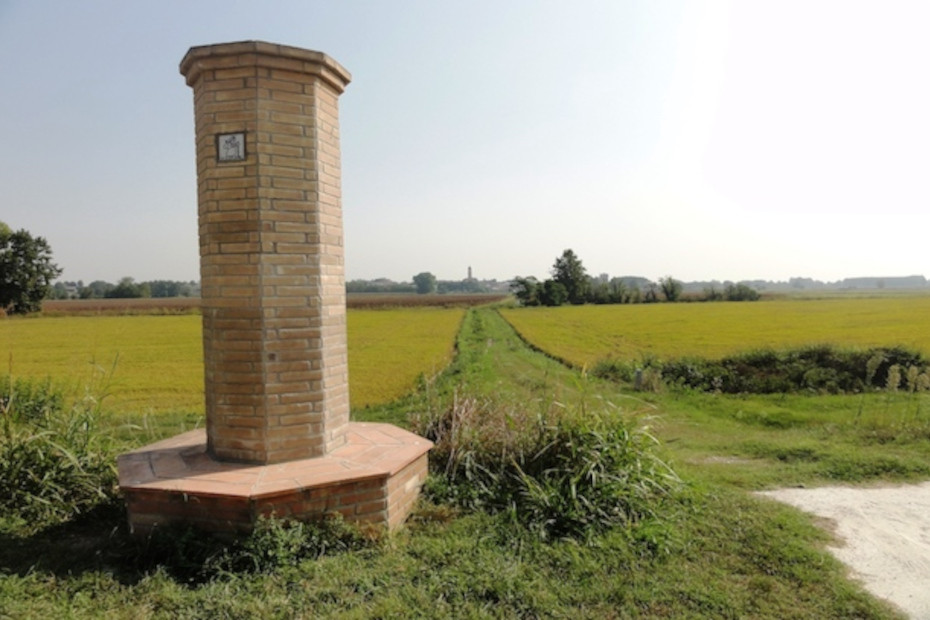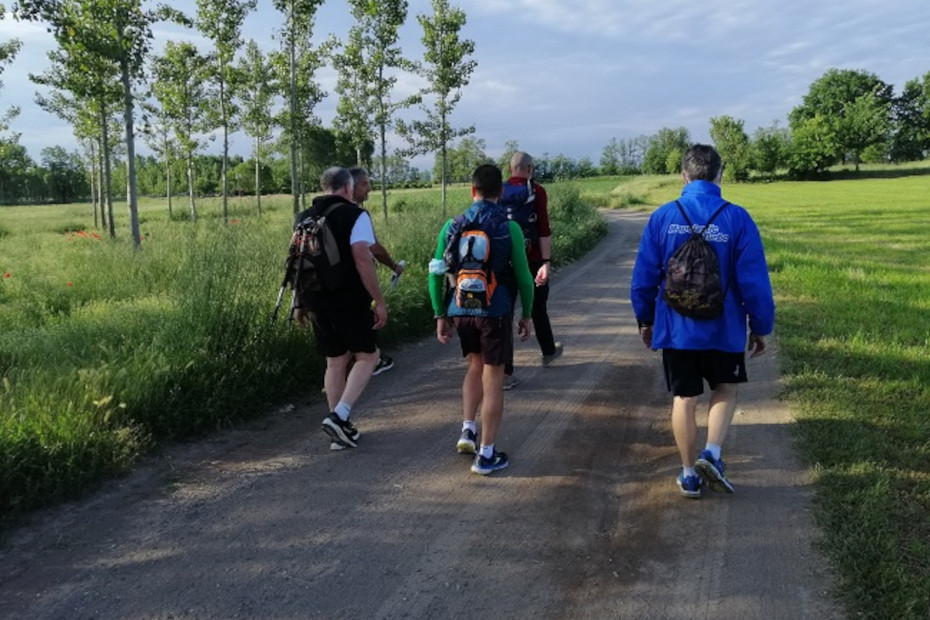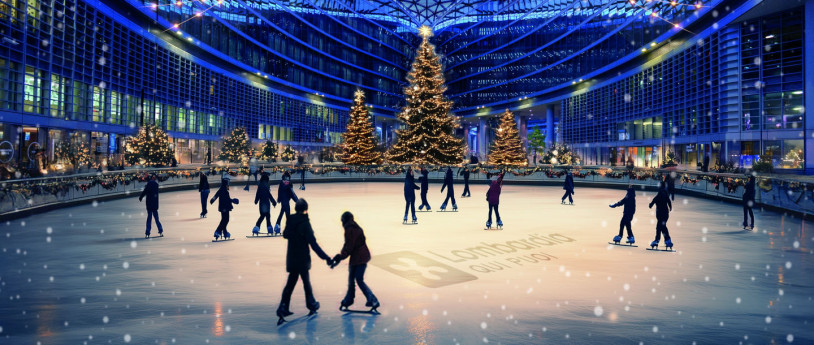- Itinerari
- Religious Tourism
Way of St. Columba
An itinerary that crosses Europe in the footsteps of St. Columba
The Way of St. Columbanus is an ancient pilgrimage route that crosses much of Europe and traces the footsteps of the 6th-7th century abbot from Ireland, his homeland, to Bobbio, site of the famous abbey he founded in the heart of the Apennines.
Columbanus is one of the most influential figures of his time, recognized as one of the founders ofEurope for his work of evangelization, civilization and reunification of the Old Continent that contributed to its reconstruction from the rubble of the Roman Empire. In 591, at the age of fifty, he set sail with twelve disciples from Bangor, Northern Ireland, and for more than thirty years traveled across Europe founding communities and monasteries in territories that, to this day, remember his deeds and preserve his memory: Ireland, Britain, France, Germany, Switzerland, Austria and Italy.
Columbanus and his disciple Gallus were key figures in Irish monasticism, the first great monastic movement in Europe that promoted literacy and education, anticipating the great monastic movement of the Middle Ages.
TheEuropean cultural itinerary conceived and mapped out by theEuropean Association of the Way of St. Columba is constantly followed in its development and implementation by between very active associations: the Friends of St. Columba for Europe of San Colombano al Lambro, the Friends of St. Columba of Bobbio, and the Friends of the Way of St. Columba of Vaprio d'Adda.
It is an opportunity to retrace the steps of the saint, who came through the Alps to Milan Longobard rulers who directed him to the small town of Bobbio, located at the northern end of the Apennines. Here he founded his last Abbey, which became a center of stability and culture in a period of violence and turbulence, and would remain for centuries the most religiously and culturally influential institution in all of northern Italy.
Columbanus died in 615. His remains are kept in the crypt of the Abbey's Basilica, where thousands of people go each year to venerate his memory Together with the cave of St. Michael in Coli, (9 km from Bobbio) where tradition has it that the Abbot met in solitude in prayer and where he is said to have died, the crypt is the destination of the path that on Italian territory runs for about 330 km over a total length of more than 5,000 km.
The Italian itinerary starts from Villa di Chiavenna, runs along the eastern side of Lake Como and continues to Lecco. You will pass through the small towns of Novate, Curcio, Dervio, Bellano and Varenna, called "The Pearl of the Lario." Villages overlooking the waters of the lake and surrounded by mountains. You will continue your steps by touching on two other Larian towns, Lierna and Abbadia, the starting point of the Sentiero del Viandante, another extraordinary path that will take you in 7 stages to discover the artistic and natural beauty of the lake.
From Lecco you continue following the currents of the Adda River, through Olginate and Brivio until you reach the Milan area. The crossing of the city takes the pilgrim to the heart (Basilica di San Marco, Duomo) and then back to the flat countryside exiting through Porta Romana.
From theancient basilica of Sant'Eustorgio for those who want to make this last leg of the journey (about 150 km) to Bobbio with spiritual and religious motives will have the possibility to reach the tomb where he has been resting since 1400 in No. 8 stages where they can receive the stamp on the pilgrim's card and obtain the testimonium at the end of the pilgrimage.
In these stages the significant places of faith and resting for the spirit are flanked by important attractions in terms of environment, landscape, culture, music, crafts and food and wine.
Leaving the city after traversing the fertile Po Valley and reaching Melegnano, Lodivecchio and Sant'Angelo Lodigiano, one picks up the pace again until climbing the hill that also acquired its name from the famous guest who passed through those lands, leaving an indelible mark.Wedged between the provinces of Lodi and Pavia San Colombano al Lambro is the realm of D.O.C. San Colombano wine, "the wine of Milan," thanks to the excellent location and abundant yield of vines from the surrounding hills.
Thelast stretch on Lombard land traces the Via Francigena in the territory of Orio Litta and Corte Sant'Andrea, where at the transitum padi, recently christened Guado di Sigerico e di San Colombano a boat, named San Colombano, awaits pilgrims and walkers to ferry them across the Po to the Piacenza side of Soprarivo.
Traveling as "Pilgrims of Hope" this route during the Jubilee Year 2025, one can stop at several Jubilee churches:
- Shrine of Blessed Virgin of Victory in Lecco
- Shrine of Our Lady of the Woods in Imbersago (LC)
- Parish Church of Santa Maria Assunta in Cernusco sul Naviglio (MI)
- Metropolitan Cathedral of Santa Maria Nascente - Milan Cathedral
- Shrine of Santa Maria dei Miracoli near San Celso in Milan
- Basilica of San Bassiano (or of the XII Apostles) in old Lodi
- Basilica of Saints Anthony Abbot and Francesca Cabrini and with a brief variation
- Sanctuary Madonna dei Cappuccini in Casalpusterlengo (LO)
Information on organized proposals on the route of the walk during the Jubilee year at the website: www.thecolumbanway.org
Mostra cosa c'è nelle vicinanze:
Itinerary stages
1. Villa di Chiavenna to Chiavenna (10.2 km)
The route on Italian territory begins a few dozen meters before the state border with Switzerland. We will ride along the N6 bicycle path from Switzerland to Chiavenna.
The path runs along the Mera River passing through small hamlets, cultivated fields and farms. In Prosto the parish church is worth a visit. From here the cycle-pedestrian path passes through beautiful meadows and farmsteads: in the distance near the village of Piuro on the right the wonderful Acqua Fraggia waterfalls are clearly visible. You then approach the "Marmitte dei Giganti": large rocks carved by water!
By now we are approaching Chiavenna where we also meet the characteristic "Crotti". Chiavenna is a beautiful town with many places to visit in addition to the characteristic historic center. In particular, the stage ends at the Collegiate Church of San Lorenzo, which was begun in the 5th century and enlarged in the following centuries. Inside is the Pace di Chiavenna work, an important example of medieval goldsmithing.
2. Chiavenna to Verceia (25 km)
We walk along theancient "Via Francisca" (indicated by various signs/indications in yellow) and then turn back onto the N6 "Val Chiavenna bicycle path" that we have already traveled on the previous leg. In Chiavenna we start from Via Marconi then continue to Via Volta and then straight ahead to Mese and then Gordona.
Near the town of Gordona we take Via Francisca which we will follow (following the "low variant") to San Pietro hamlet of Samolaco. Here we will find clear signs to descend again to the bridge over the Mera. We are now on the plain among cultivated fields and some farmsteads, leaving the mountains of Valchiavenna on our sides. From now on we will skirt the Mera along the N6 cycle-pedestrian path to the hamlet of Giumellasco.
We are now on the outskirts of Novate Mezzola after a short passage (on sidewalk) along the SP2 we will resume the N6 cycle-pedestrian path that, skirting the lake of Novate Mezzola will take us to Verceia at the Church of San Fedele a few steps from the lakefront. In the hamlet of Campo di Novate Mezzola, the Oratory of San Colombano ancient parish building built on the remains of the ancient monastery founded by the monks of Bobbio is worth a visit.
3. Verceia to Colico (12.4 km)
The stage starts from the Verceia lakefront following the N6 until bending to the right at Casello Sette Street. From here, follow the signs to Dubino and then cross the Adda River.
Alternatively, at the gates of Dubino (always indicated in place) it is possible to reach the Adda via the picturesque "Pian di Spagna" nature reserve. In this case, at the end of the route, having reached the SS36 should, with care, be crossed to pass on the protected side of the bridge where there is a sidewalk.
On the other hand, if we cross Dubino we will find ourselves skirting the embankment for 300-400 meters along a country path to the bridge over the SS36. Here we will cross it safely on the side protected by the sidewalk and descend immediately under the bridge where the "Sentiero Valtellina" bike path passes, which runs along the riverbank: we will ride it all the way to Colico skirting the Adda River in a very beautiful and wild natural environment. Colico offers many accommodations and the lakeside is well worth a visit.
4. Colico to Dervio (12.8 km)
Two different options are possible from Colico . It is suggested to follow the signs to Piantedo for the Sanctuary of the Madonna di Valpozzo. It lengthens the itinerary by a few kilometers but the effort is repaid by the wonderful place. Here begins the Sentiero del Viandante (Wayfarer's Path), which we will follow in the next stages to Lecco.
Alternatively, from Colico, to shorten the route, you can already follow the "Vie del Viandante" signs towards Villatico and reach the "Sentiero del Viandante" a few kilometers after the Valpozzo Sanctuary.
Along the path we will be able to admire the Como Lake Lecco shore. We reach the beautiful hamlet of Corenno Plinio characterized by an ancient medieval village. From here we reach the conclusion of the rappa in Dervio, a characteristic lake town.
5. Dervio to Lierna (18.7 km)
One continues always on the Wayfarer's Path. After Varenna you can choose between two routes, high or low variant both well marked. The second one is less challenging because of the difference in height to be faced.
In Lierna, a very beautiful village overlooking the lake with a characteristic beach, we point out the Romanesque bell tower, one of the oldest in Lombardy.
6. Lierna to Lecco (17.6 km)
The route, which is very beautiful, winds along paths and mule tracks through several hamlets with wonderful views of the lake. You then reach Abbadia Lariana at the church of San Martino from where you can enjoy a wonderful landscape.
From here it is possible to continue on foot to Lecco thanks to the trail opened in 2020 reaching Piazza Cermenati, which overlooks the lake and is dedicated to sailors-a nice similarity to pilgrims. The stage ends in Lecco, at the Basilica S. Nicolo' which is located near the square and is easily reached from the lakeside.
7. Lecco to Calco (Arlate) (19.7 km)
In Lecco, the route begins immediately after crossing the historic Azzone Visconti Bridge by bending to the left and taking the "Garlate and Olginate lakes cycle-pedestrian path" (right bank of the Adda).
Then at the height of the old railway bridge (now cycle-pedestrian) to Calolziocorte we continue always remaining on the right bank the "Adda River cycle path" (cycle-pedestrian path).
We are in the territory of the Adda Nord Park and continuing we arrive in Brivio where the pilgrim can immerse himself in the "marsh," a naturalistic site of European value, rich in biodiversity and rigorously preserved. Leaving Brivio, in Arlate, a hamlet of Calco, one encounters the church of SS. Gottardo and Colombano. This is a Romanesque church, originally part of a monastery (probably a women's one), set on the top of a hill overlooking the Adda Valley. The detour to the church is well indicated on the path along the Adda.
8. Calco (Arlate) to Vaprio d'Adda (23.3 km)
We remain on the Adda River cycle path, in the territory of the Adda Nord Park, and reach Imbersago, where we find the "Leonardo ferry," named after Leonardo da Vinci, who studied its mechanism during his stay in Vaprio d'Adda.
Between Paderno and Cornate, we encounter the "Forra dell'Adda," one of the most spectacular and rarely seen stretches of the Adda River. It is a canyon carved into the rock of glacial origin and dominated by the presence of the famous three horns-three erratic boulders-that were immortalized by Leonardo da Vinci in some of his paintings. Just before Porto d'Adda we see on the left the sanctuary of the Madonna della Rocchetta, and along the way we also encounter stupendous hydroelectric power plants (Bertini, Taccani, Esterle) built at the beginning of the 20th century and still in operation.
Passing Trezzo, with its castle, and Crespi, with its famous industrial village, we continue on the Martesana naviglio bike path, leaving the historic Villa Castelbarco on the right, and reach Vaprio d'Adda. Near the Casa del Custode delle Acque (now the headquarters of the Pro loco and the Adda di Leonardo Ecomuseum) we enter the village and reach the ancient church of San Colombano already built before 1155, the destination of this stage. In the church we find a unique and ancient representation of St. Columbanus according to ancient styles: beardless, with reddish hair and a tonsure respectful of the rule with a white habit and a white dove on his right shoulder.
Upon arrival in Vaprio, a town overlooking the Adda River and the Martesana canal, one can enjoy the same glimpse painted by 18th-century painters such as Bernardo Bellotto and Gaspar van Wittel, just as the landscape depicted in a Leonardo drawing of the Imbersago ferry (now at the Royal Library in Windsor) is perfectly preserved after more than five centuries. In the center, not far from the stupendous church of San Colombano (see more), we point out: the 18th-century Church of St. Anthony of Padua and the parish church of San Nicolò, built between 1816 and 1817 to a design by architect Luigi Cagnola.
Villa Melzi, where Leonardo da Vinci stayed for a long time, working on his studies of hydraulics, nature and the Lombard landscape, is part of the 18th-century "ville di delizia" frequented during the summer months by Milanese nobles. Villas that we also find in the later localities overlooking the Martesana along the route to Milan.
9. Vaprio d'Adda to Gorgonzola (17 km)
Back at the Casa del Custode delle Acque, we follow the Naviglio della Martesana bike path, on the left bank, at first still immersed in nature, then in a more urban landscape through the villages of Groppello (a hamlet of Cassano where we cross the wooden "ruotone," a large water wheel), Cassano d'Adda, Inzago, Bellinzago Lombardo and Gorgonzola.
The route, dotted with old farmsteads, and ancient "ville di delizia" from the 1700s-1900s (mainly summer residences of Milanese aristocrats) is all on level ground. The stage ends at the parish church of Saints Gervaso and Protaso.
10. Gorgonzola to Milan (21.6 km)
We resume the left side of the Naviglio della Martesana bicycle path, which runs along the canal through several municipalities: we are now in the Milanese hinterland area, but the waterway and surrounding vegetation make our approach to the city pleasant.
Arriving in Milan, near the historic Cassina di Pomm, we cross it until we reach the heart of the metropolis, in Piazza Duomo, and then continue to the basilica of Sant'Eustorgio, where our stage ends. The foundation of the church dates back to the 3rd-4th centuries, as evidenced by some early Christian finds inside the apse. The bell tower, built around 1300, is the tallest in Milan and on the top you can see a star, a symbol of the Magi and their journey: in fact, their relics are kept inside.
It is from this basilica that St. Columbanus' pilgrimage to Bobbio ideally starts again, and it is from here that the next stages of our journey also take their start: those that will allow us, by collecting the stamps in the indicated places, to acquire the Testimonium Peregrinationis Peractae ad Sancti Columbani Civitatem. It is the certificate that proves the pilgrimage to the tomb of St. Columbanus in Bobbio iene issued with the approval of the religious authorities of Bobbio: the bishop of Piacenza-Bobbio, the chapter of Bobbio cathedral, the provost of the basilica of St. Columbanus, the archpriest of Bobbio cathedral, and the rector of the shrine of Our Lady of Help.
Along with the Testimonium, the Chartula Peregrini, the "diploma" that is issued to all pilgrims arriving in Bobbio regardless of the distance traveled, will also be handed out, bearing a prayer by St. Columba.
11. Milan to Melegnano (23.3 km)
There are still 150 km to go to Bobbio, and this stretch, with 12 credentials, if done in the spirit of a pilgrim entitles one to the testimonium once one arrives at the tomb of St. Columbanus.
It starts from the Basilica of Sant'Eustorgio, and passing by the Sanctuary Santa Maria dei Miracoli one arrives at Corso di Porta Romana to Piazzale Lodi. You then take via San Dionigi to reach Nocetum, at the entrance to Vettabbia Park. Taking via Sant'Arialdo, one reaches Chiaravalle Abbey, and skirting Pertini Park, one arrives first at the center of Poasco and then at the town of Sesto Ulteriano.
The next stop isViboldone Abbey, but before arriving at the ancient settlement it is necessary to cross an industrial area. Leaving the abbey, take via Marignano again and then follow the sign for the small hamlet of Mezzano. Entering Melegnano you reach the church of San Giovanni Battista, where the stage ends.
12. Melegnano to S.Angelo Lodigiano (23.4 km)
The stage resumes by going through the center, first skirting the Mediceo castle until just outside a bicycle path that runs parallel to SP 17 and leads to Cerro al Lambro, along Via Mirandola.
At the end of the built-up area, look for the bike path that leads to the bridge over the Lambro River and skirts a short stretch of it, then turns toward San Zenone al Lambro. Having reached the open countryside, you arrive at Santa Maria in Prato, where you can admire the ancient little church. Skirting the Milanino and Gallinazza farmsteads, and then crossing the Fornace farmstead, you reach Lodivecchio where, after an obligatory visit to the Basilica of the Twelve Apostles, you resume in the direction of Sant'Angelo Lodigiano, passing first through the village of Castiraga Vidardoe.
A section of bicycle path leads through Viale Zara toward the center of Sant'Angelo Lodigiano, skirting first the Visconti castle and then the basilica of Saints Antonio Abate and Francesca Cabrini, the center of the village.
13. Sant'Angelo Lodigiano to S.Colombano al Lambro (13.1 km)
From the square of the Basilica, you walk toward Delmati Hospital and, leaving it behind, take Via dei Boschi, also known as Mio Lungo, surrounded by fields, which runs alongside the Belfuggito farmstead and then continues to the Belfiorito farmstead.
Here, you encounter a small chapel dedicated to Our Lady of the Way and then begin to climb toward the San Colombano Hill Park, the only high ground in the entire Po Valley. You ride all the way up the scenic road with bike path, among vineyards, fig and cherry trees (if you are lucky enough to enjoy a clear day, you can see the Apennines on the right and the Alps on the left).
After passing the village of Madonna dei Monti, we descend down the Collada to the parish church dedicated to San Colombano Abate and the village center of San Colombano al Lambro, where the stage ends.
14. San Colombano al Lambro to Santimento (18.3 km)
From the churchyard of the church dedicated to St. Columbanus we cross the historic center and then leave the built-up area on Viale San Giovanni di Dio where the path becomes dirt for a stretch and enters the countryside, among fields of corn and sporadic farmsteads. Another dirt road, among trees, completely shaded, follows the Cusana irrigation ditch until we find the Lambro River again. We leave the meadows, pass under the provincial road and turn right toward Lambrinia, a hamlet of Chignolo Po.
A small path on the right protected by guardrails leads you over the bridge crossing the Lambro and back onto a dirt road, abandoning the provincial road. Thus we take the Po cycle path, pass under the railroad bridge and the path coincides for this stretch with the Via Francigena at the top of the river banks.
Straight ahead on the embankment to the village of Corte Sant 'Andrea we arrive at the Transitum Padi of Corte Sant'Andrea, where we cross the Po on the boat dedicated precisely to St. Columba
Having disembarked on the Emilian side of the river, we go up the embankment and, keeping the embankment on the right, arrive at Santimento and the church of San Giovanni Battista, the destination of our stage.
14a. From Corte Sant'Andrea (Senna Lodigiana) to Calendasco (PC).
An alternative to crossing the Po, entirely by bicycle, with passage from Fombio (where it is possible to visit the 17th-century church dedicated to Saints Peter Paul and Columbanus) is 42 km to Piacenza and requires 2 more days of walking. It passes through Guardamiglio and San Rocco al Po.
